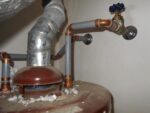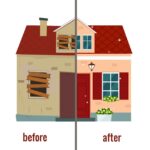Beware of Polybutylene Pines in Older Homes

- Mold
- Water damage
- Or even flooding
- PB pipes used for interior applications are generally gray in color but may also be black. PB pipes used outside may be gray, blue or black.
- PB pipe is flexible, not rigid.
- PBpipes may be stamped with the code: PB2110.
- Near the water heater
- Connecting to sinks and toilets
- At the main shut-off valve or water meter








 Kim N. Bregman
Kim N. Bregman